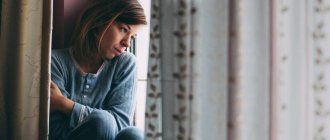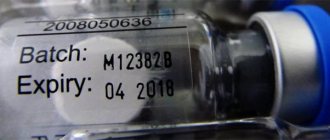How does Herceptin work?
It has been established that Herceptin causes immune-mediated cytotoxicity, blocks proliferation and apoptosis of target cells, and has antiangiogenic activity. The principles of using Herceptin in the treatment of breast cancer, both as monotherapy and in combination with cytostatic drugs, are discussed in detail. Treatment with Herceptin may be effective for other types of tumors. Herceptin, unlike traditional chemotherapy drugs, affects only cancer cells with an increased content of HER2 receptors and therefore causes fewer side effects.
Indications for use of Herceptin:
Metastatic breast cancer with tumor overexpression of HER2:
- as monotherapy, after one or more chemotherapy regimens;
- in combination with paclitaxel or docetaxel, in the absence of previous chemotherapy (first line of therapy);
- in combination with aromatase inhibitors for positive hormonal receptors (estrogen and/or progesterone) in postmenopausal women.
Early stages of breast cancer with tumor overexpression of HER2:
- in the form of adjuvant therapy after surgery, completion of chemotherapy (neoadjuvant or adjuvant) and radiation therapy;
- in combination with paclitaxel or docetaxel after adjuvant chemotherapy with doxorubicin and cyclophosphamide;
- in combination with adjuvant chemotherapy consisting of docetaxel and carboplatin;
- in combination with neoadjuvant chemotherapy and subsequent adjuvant monotherapy with Herceptin for locally advanced (including inflammatory form) disease or in cases where the tumor size exceeds 2 cm in diameter.
Herceptin®
Treatment with Herceptin® should only be carried out under the supervision of an oncologist. HER2 testing must be performed in a specialized laboratory that can provide quality control of the testing procedure.
Herceptin® should be used in patients with metastatic breast cancer or early stage breast cancer only in the presence of tumor overexpression of HER2, as determined by immunohistochemistry (IHC), or HER2 gene amplification, as determined by in situ hybridization (FISH or SISH). Accurate and validated determination methods should be used.
Herceptin® should be used in patients with metastatic gastric cancer only in the presence of tumor overexpression of HER2, determined by IHC as IHC2+ and confirmed by SISH or FISH, or IHCZ+. Accurate and validated determination methods should be used.
There are currently no data from clinical studies on patients receiving Herceptin® repeatedly after use in adjuvant therapy.
Infusion reactions and hypersensitivity reactions
Infrequently, serious infusion-related adverse reactions occurred with Herceptin® administration: shortness of breath, hypotension, wheezing, hypertension, bronchospasm, supraventricular tachyarrhythmia, decreased hemoglobin oxygen saturation, anaphylaxis, respiratory distress syndrome, urticaria and angioedema. Most of them occurred during infusion or within 2.5 hours from the start of the first administration. If an infusion reaction occurs, the administration should be stopped. The patient should be carefully monitored until all symptoms resolve. Effective therapy for serious reactions involves the use of oxygen inhalation, beta-agonists, and corticosteroids. If severe and life-threatening infusion reactions occur, discontinuation of further Herceptin® therapy should be considered.
In rare cases, these reactions have been associated with a fatal outcome. The risk of fatal infusion reactions is higher in patients with shortness of breath at rest caused by pulmonary metastases or concomitant diseases, therefore such patients should not receive Herceptin® therapy.
Cases have been reported in which deterioration of the condition was observed after initial improvement, as well as cases with delayed rapid deterioration of the condition. Death occurred within hours to one week after infusion. In very rare cases, patients have developed symptoms of infusion reactions or pulmonary symptoms (more than 6 hours after starting Herceptin® administration). Patients should be warned about the possible delayed development of these symptoms and the need to immediately contact their doctor if they occur.
Lung disorders
When using the drug Herceptin® in the post-registration period, severe pulmonary events were recorded, which were sometimes accompanied by death. In addition, cases of interstitial lung disease (ILD), including pulmonary infiltrates, acute respiratory distress syndrome, pneumonia, pneumonitis, pleural effusion, acute pulmonary edema and respiratory failure, have been observed. Risk factors associated with ILD include: prior or concomitant therapy with other anti-neoplastic drugs known to be associated with ILD (taxanes, gemcitabine, vinorelbine, and radiation therapy). These phenomena can occur both during infusion (as manifestations of infusion reactions) and delayed. The risk of severe pulmonary reactions is higher in patients with metastatic lung disease, concomitant diseases, accompanied by shortness of breath at rest. Therefore, such patients should not receive Herceptin®. Caution should be exercised, especially in patients receiving concomitant taxane therapy, due to the development of pneumonitis.
Cardiotoxicity
General instructions
Heart failure (NYHA functional class II-IV) observed after therapy with Herceptin® as monotherapy or in combination with paclitaxel or docetaxel, especially after chemotherapy containing anthracyclines (doxorubicin or epirubicin), may be moderate or severe and in some cases can lead to death.
Patients who are scheduled to receive Herceptin®, especially those who have previously received anthracyclines and cyclophosphamide, should first undergo a thorough cardiac evaluation, including a history, physical examination, ECG, echocardiography, and/or radioisotope ventriculography or MRI.
Before starting treatment with Herceptin®, it is necessary to carefully weigh the possible benefits and risks of its use.
Because the half-life of Herceptin® is approximately 28-38 days, the drug may remain in the blood for up to 27 weeks after completion of therapy. Patients receiving anthracyclines after completion of Herceptin® treatment may have an increased risk of cardiotoxicity. If possible, physicians should avoid prescribing anthracycline-based chemotherapy for 27 weeks after completion of Herceptin® therapy. When using anthracycline drugs, careful monitoring of cardiac function should be performed.
The need for a routine cardiac examination should be assessed in patients in whom cardiovascular disease is suspected during pre-treatment examination.
All patients should have cardiac function monitored during treatment (eg, every 12 weeks).
As a result of monitoring, it is possible to identify patients who have developed cardiac dysfunction.
In patients with asymptomatic cardiac dysfunction, more frequent monitoring (eg, every 6 to 8 weeks) may be beneficial. With prolonged deterioration in left ventricular function that does not manifest itself symptomatically, it is advisable to consider discontinuation of the drug if there is no clinical benefit from its use. Caution should be exercised during treatment in patients with symptomatic heart failure, hypertension, or a documented history of coronary artery disease, as well as in patients with early-stage breast cancer with a left ventricular ejection fraction ≤55%.
If LVEF falls to values below 50% and 10 points relative to the value before starting therapy, treatment should be suspended and LVEF re-evaluated no later than 3 weeks later. If LVEF does not improve or continues to decline, discontinuation of the drug should be considered if the benefit does not outweigh the risk in the patient. Such patients should be examined by a cardiologist and be under his supervision.
If symptomatic heart failure develops during Herceptin® therapy, appropriate standard drug therapy should be administered. Discontinuation of Herceptin® should be considered if clinically significant heart failure develops, unless the benefit of the drug in a particular patient outweighs the risk.
The safety of continuing or restarting Herceptin therapy in patients who develop cardiotoxicity has not been studied in prospective clinical studies. Most patients showed improvement with standard drug therapy in pivotal clinical trials. Diuretics, cardiac glycosides, beta-blockers and/or ACE inhibitors were used as standard therapy. In the presence of clinical benefit from the use of Herceptin®, the majority of patients with adverse reactions from the heart continued therapy without the manifestation of additional clinically significant reactions from the heart.
Metastatic breast cancer
It is not recommended to use Herceptin® in combination with anthracyclines for the treatment of metastatic breast cancer.
The risk of developing cardiotoxicity in patients with metastatic breast cancer is increased with prior anthracycline therapy, but it is lower compared with that with simultaneous use of anthracyclines and Herceptin®.
Early stages of breast cancer
Patients with early stages of breast cancer should undergo cardiac evaluation before starting treatment, every 3 months during therapy, and every 6 months thereafter for 24 months after the last dose of the drug. Longer-term monitoring is recommended after treatment with Herceptin® in combination with anthracyclines, with examinations occurring once a year for 5 years from the date of the last dose of Herceptin®, or beyond if there is a prolonged decrease in LVEF.
Adjuvant therapy
It is not recommended to use Herceptin® in combination with anthracyclines as part of adjuvant therapy. In patients with early stage breast cancer who received Herceptin® after anthracycline-based chemotherapy, there was an increase in the incidence of symptomatic and asymptomatic adverse cardiac events compared with those who received chemotherapy with docetaxel and carboplatin (non-anthracycline-based regimens). However, the difference was greater in cases of combined use of Herceptin® and taxanes than in cases of sequential use.
Regardless of the regimen used, the majority of symptomatic cardiac events occurred in the first 18 months of treatment. In one of the 3 pivotal studies conducted (with a median follow-up of 5.5 years), there was a sustained increase in the cumulative incidence of symptomatic cardiac events or events associated with a decrease in LVEF: in 2.37% of patients receiving Herceptin® with taxanes after therapy with anthracyclines, compared with 1% of patients in the comparison groups (in the group of therapy with anthracyclines and cyclophosphamide, then taxanes, and in the group of therapy with taxanes, carboplatin and Herceptin®).
Since patients in the early stages of breast cancer with a history of established congestive heart failure, uncontrolled high-risk arrhythmias, angina pectoris requiring drug treatment, clinically significant heart defects, signs of transmural myocardial infarction according to ECG, poorly controlled arterial hypertension did not participate in the clinical trial, then There is no information on the benefit/risk ratio in such patients, and therefore treatment with the drug is not recommended for such patients.
Neoadjuvant-adjuvant therapy
For patients with early stages of breast cancer who may be eligible for neoadjuvant-adjuvant therapy, the use of Herceptin® in combination with anthracyclines is recommended only if they have not previously received chemotherapy and only when using low-dose anthracycline regimens (maximum total dose of doxorubicin 180 mg/day). m2 or epirubicin 360 mg/m2).
In patients receiving low doses of anthracyclines and Herceptin® as part of neoadjuvant therapy, additional cytotoxic chemotherapy after surgery is not recommended.
Since patients with heart failure II-IV functional class according to NYHA, LVEF <55% according to radioisotope ventriculography or echocardiography, a history of established congestive heart failure, angina pectoris requiring drug treatment, signs of transmural myocardial infarction according to ECG, poorly controlled arterial hypertension (systolic pressure >180 mmHg or diastolic pressure >100 mmHg), clinically significant heart defects and uncontrolled high-risk arrhythmias did not participate in the clinical study, treatment with Herceptin® is not recommended for such patients.
Experience with the use of trastuzumab in combination with low-dose anthracycline regimens is limited. When Herceptin® was used in conjunction with neoadjuvant chemotherapy, which included three cycles of neoadjuvant doxorubicin (total dose of doxorubicin 180 mg/m2), the incidence of symptomatic cardiac dysfunction was low (1.7%).
Neoadjuvant-adjuvant therapy with Herceptin® is not recommended for patients over the age of 65 years, since clinical experience in such patients is limited.
Additional Information
When prescribing Herceptin® to a patient with hypersensitivity to benzyl alcohol, the drug must be diluted with water for injection, and only one dose can be taken from each multi-dose vial. The remaining drug should be thrown away.
Impact on the ability to drive vehicles and operate machinery
Studies have not been conducted to study the effect of the drug on the ability to drive a car and operate machinery. If symptoms of infusion reactions occur, patients should not drive or operate machinery until symptoms resolve.






